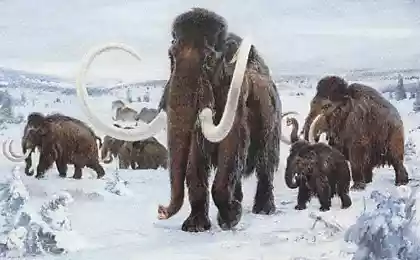965
African elephants: view from below
Photographers Barry and Jill Wilkins Snisbi made these amazing pictures of elephants, dug a bunker in the Etosha National Park, Namibia. They sat quietly for hours to make these pictures of African elephants from the bottom.
8 ph © J & B Photographers / Steve Bloom Images / Barcroft Media
1. African elephant - the largest of the living animals.
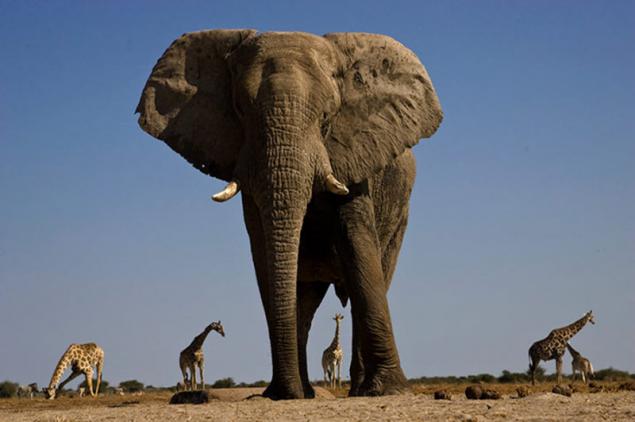
2. The length of the body of these animals reaches 6-7, 5 m height at the shoulders (the highest point of the body) - 2, 4-3, 5 m. The average body weight of females 2, 8 t, males - 5 tons
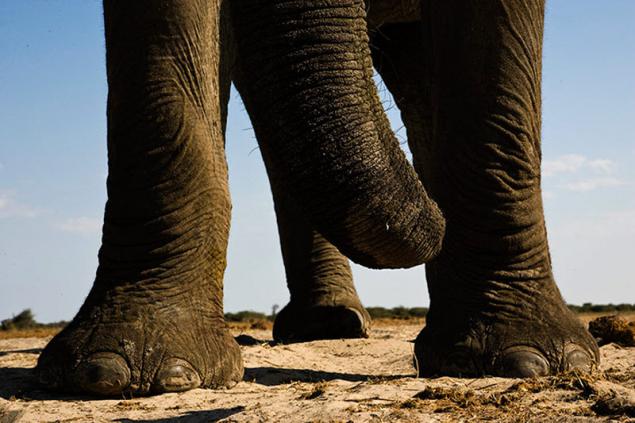
3. The trunk is long flexible appendage formed fused together nose and upper lip. At the African elephant's trunk ends with two appendages, dorsal and ventral. The usual length of the trunk - about 1, 5 m, weight - 135 kg.
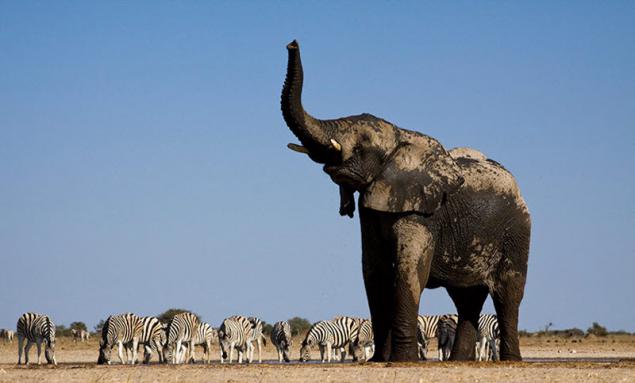
4. Huge ears (up from bottom to top 1, 2-1, 5 m) are an evolutionary adaptation to the hot climate. Due to the large area and developed the blood supply they help the elephant to get rid of excess heat. Moving ears, elephants fanned them like a fan.
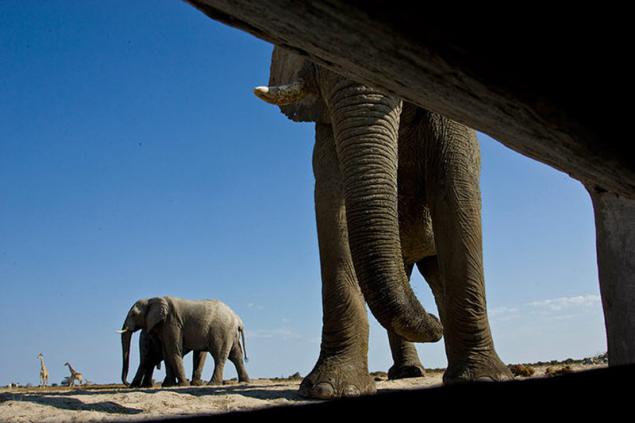
5. Figure veins on the surface of the ears of the elephant as individual as fingerprints in humans. It can help you identify the elephant. Assist in the identification and holes and tears at the edges of the ears.

6. Elephants have difficulty seeing (at a distance of no more than 20 m), but they have an excellent sense of smell and hearing. For communication using a large number of visual cues and touch, and a wide repertoire of vocalizations, including well-known to all the loud trumpets.

7. Despite the massive addition, elephants surprisingly mobile. Good swim or move along the bottom of the reservoir, holding just above the water's trunk. Typically, it is moving at a speed of 2-6 km / h, but for a short time can reach the speed of 35-40 km / h.
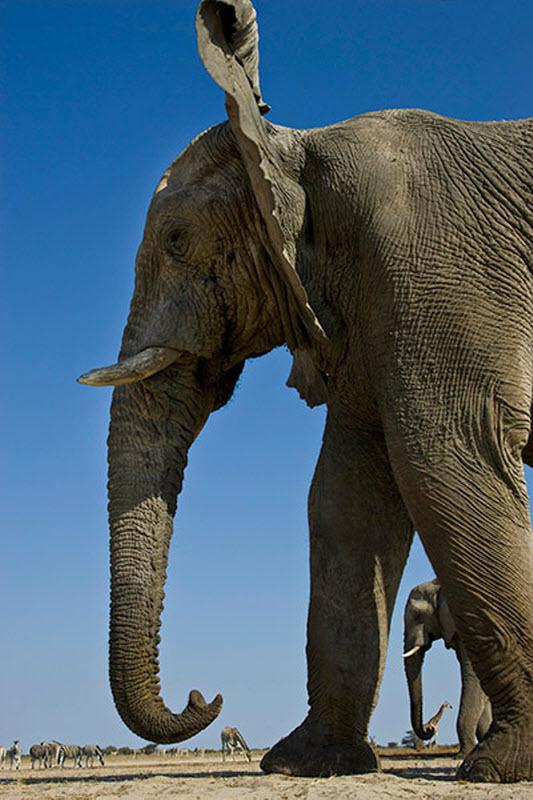
8. Sleep elephants standing, gathered together in a tight group, only the cubs lie down on its side on the ground. Sleep lasts about 40 minutes.
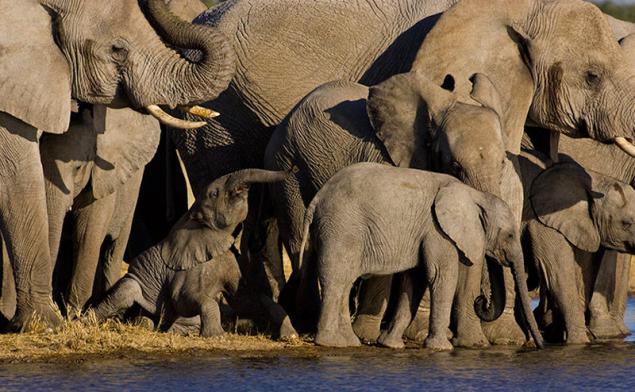
Source:
8 ph © J & B Photographers / Steve Bloom Images / Barcroft Media
1. African elephant - the largest of the living animals.

2. The length of the body of these animals reaches 6-7, 5 m height at the shoulders (the highest point of the body) - 2, 4-3, 5 m. The average body weight of females 2, 8 t, males - 5 tons

3. The trunk is long flexible appendage formed fused together nose and upper lip. At the African elephant's trunk ends with two appendages, dorsal and ventral. The usual length of the trunk - about 1, 5 m, weight - 135 kg.

4. Huge ears (up from bottom to top 1, 2-1, 5 m) are an evolutionary adaptation to the hot climate. Due to the large area and developed the blood supply they help the elephant to get rid of excess heat. Moving ears, elephants fanned them like a fan.

5. Figure veins on the surface of the ears of the elephant as individual as fingerprints in humans. It can help you identify the elephant. Assist in the identification and holes and tears at the edges of the ears.

6. Elephants have difficulty seeing (at a distance of no more than 20 m), but they have an excellent sense of smell and hearing. For communication using a large number of visual cues and touch, and a wide repertoire of vocalizations, including well-known to all the loud trumpets.

7. Despite the massive addition, elephants surprisingly mobile. Good swim or move along the bottom of the reservoir, holding just above the water's trunk. Typically, it is moving at a speed of 2-6 km / h, but for a short time can reach the speed of 35-40 km / h.

8. Sleep elephants standing, gathered together in a tight group, only the cubs lie down on its side on the ground. Sleep lasts about 40 minutes.

Source:











